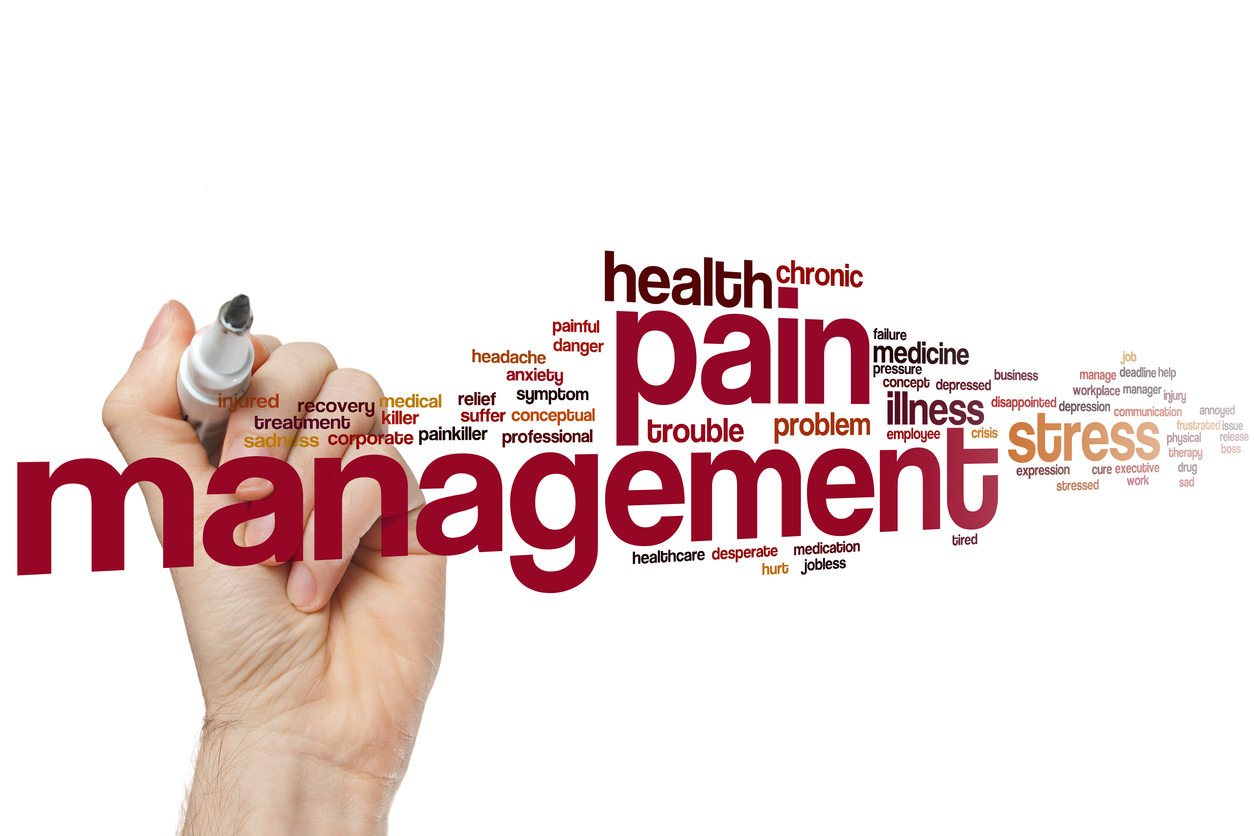
Make a Resolution to Get Help for Your Chronic Pain
Winter and the onset of cold temperatures can jeopardize anyone’s outdoor exercise routines but, for those suffering from chronic pain the bitter temperatures can be especially cruel. “There is often an increased rate of chronic pain flare-ups when the temperatures begin to fall and, given our long winters, people with chronic pain find themselves dependent upon their heating pads, blankets, and heavy clothing,” said Nichole M. Elmendorf, Occupational Therapist and owner of Progressive Beginnings, LLC. Cold temperatures cause muscle and ligament stiffness, which can make moving arduous and painful. “And, sadly, inactivity can lead to even greater pain.”
When muscles shorten, a natural response to combat inactivity is spasms, which leads to severe discomfort and intense pain. “Shortened muscles, which can be caused by temperature drops in energy-deficient muscles, is the primary source of pain,” said Elmendorf. For some, whose condition is delicate, even minor fluctuations in temperature result in increased discomfort. “Excessive cold can cause leg, hip, and joint pain.” Oversensitive nerves also occur in chronic pain sufferers. Chronic conditions are frequently accompanied by nerves that react intensely to even minor temperature changes. These hypersensitive nerves can cause widespread muscle and joint pain. “While the cold temperatures make all of us prefer to stay near a nice fireplace, this inactivity on a winter-long basis is not the best decision for any of us – especially those with chronic pain,” added Elmendorf. Aquatic Therapy Aquatic (water) therapy is a form of rehabilitation and pain management performed in the water under the guidance of an occupational or physical therapist. Putting the body in water allows the muscles to relax and reduces pain while providing support and resistance to enhance therapeutic benefits.
Progressive Beginnings, LLC, is the only rehabilitation facility in Sheboygan County to offer a warm water (heated to 96 (+) degrees Fahrenheit) aquatic therapy pool. “Occupational and Physical therapists specializing in aquatic therapy work with each patient in a safe environment using the buoyancy of the water to reduce the weight of gravity. This frees the patient to move and exercise and get back to a functional level for everyday life,” said Elmendorf.
“Exercising in water utilizes several principles and has many benefits such as speeding-up the recovery process, boosting muscle performance, reducing pain and gaining greater independence after an illness, injury or surgery,” said Elmendorf. Therapists trained in aquatic therapy create gentle currents aimed at specific areas of the body by using equipment such as water paddles or noodles to help the patient target problem areas.
Nine Benefits of Aquatic Therapy
- Hydrostatic Pressure – because water is denser than air, it exerts more pressure on you as you enter than you’re used to experiencing in air; water constantly adjusts its shape to accommodate your movements. The water compresses your skin, muscles and joints through a concept called hydrostatic pressure. The heart and lungs work harder because the water exerts pressure on the chest cavity.
In addition, the pressure exerted by the water acts like a compression wrap and helps the body drain fluid from swollen areas and carry it back to the heart. - Dulled Sense of Touch – The nervous system has an acute network of nerve endings in the skin and muscles that respond to the slightest stimulus. Under the constant stimulus of the water’s pressure, the nervous system automatically dulls the reticular system, which is the part of the brain responsible for dealing with tactile sensory neurons. When the reticular system is dulled there is reduced muscle pain making it easier to stretch muscles to their full range of motion. Since the water conducts heat much better than air the heated water also heats the patient’s tendons, ligaments and muscles while reducing pain. People who dislike being touched often feel calmer in water because their sense of touch isn’t as acute.
- Resistance One of the biggest aquatic therapy advantages is the constant resistance of water. Water exercises don’t require bulky sets of resistance equipment and allow complete freedom of movement. Being forced to exert more energy to perform daily functional motions helps strengthen atrophied muscles faster and the presence of water helps reduce pain. This allows patients who are unable to stand on land to do work in an upright position without the fear of falling.
- Rebuilding Muscle Memory The natural viscosity and resistance water provides forces you to move slower, which allows the brain to process the signals from your muscles more thoroughly; an ideal benefit for rebuilding muscle memory. Exercising in water makes patients focus on taking the muscle properly through its full range of motion because they can’t move as quickly and are able to think about how their body is moving.
- Improved Circulation Due to the hydrostatic pressure that occurs in aquatic therapy, your circulatory system is assisted in performing its job correctly. In addition, water used for aquatic therapy is kept at warmer-than-average temperatures promoting circulation. Increased blood flow to the limbs helps promote healing and recovery. This compensation for poor circulation enables oxygen-rich blood to reach the periphery of the body and assists with the removal of waste and edema.
- Muscle Relaxation Warm water helps to dilate blood vessels and improve the circulation to a person’s muscles. Since sore muscles after a hard workout can be demotivating, one of the biggest aquatic therapy benefits is in the way it relaxes muscles, prevents accidental injury from overtraining and reduces stress on healing muscles, cartilage, or connective tissue.
- Massage The gentle flow of water molecules around the body acts as a natural form of massage, helping to further promote circulation and the relaxation of tired or sore muscles.
- Fun Environment One of the most important aquatic therapy advantages is its ability to promote a positive, reinforcing environment for you to work in. And when conducted in the lighthearted atmosphere associated with water, aquatic therapy is vital to the healing process.
Aside from aquatic therapy, Elmendorf says, “there are many ways that chronic pain sufferers can combat cold weather-induced pain. Simple actions and movements can help keep the body warm, which may reduce pain.” It’s important to remember that inactivity is more harmful than engaging in some form of activity. “Many people are afraid they will hurt themselves or cause more pain if they engage in some form of activity, but the truth is more harm is done by being inactive,” said Elmendorf. Low impact activities and low intensity, which reduces the risk of exhaustion are vitally important for chronic pain sufferers. Elmendorf suggests the chronic pain sufferers to consider the following:
Be Active
Gentle movement such as yoga, walking, tai chi, etc. can help stretch the muscles. These activities also have the added benefit of reducing mental and physical stress. Controllable gym activities that can be easily stopped such as the elliptical machine, stationary bike, treadmill and weight resistant machines can build muscle while maintaining a proper level of exertion. Swimming in a heated pool can soothe muscle tension and provide an easy outlet for light physical activity.
Vitamin D
People suffering with chronic pain and depression are often deficient in vitamin D, especially in winter when our exposure to sunlight is limited and our levels become depleted. Making sure your body is getting the vitamin D it needs may aid in relieving muscle pain and stiffness while increasing your energy. Talk to your doctor about testing your vitamin D level.
Dress Warm
One of the best ways to retain body heat is to wear the appropriate clothing beginning with a base layer and adding a shirt, sweater and jacket as needed. Wearing multiple layers such as scarves, sweaters, gloves and socks allows you to change your immediate temperature without having to adjust the thermostat or sit under a mountain of blankets. At night, warmer pajamas and bed linens will continue to keep your body warm.
Skip Nightcaps
While some alcoholic beverages seem to provide a toasty warming sensation, the fact is, alcohol causes blood vessels in the skin to dilate resulting in heat loss. Rather than pouring an alcoholic nightcap, try brewing an herbal tea that will not only heat up your insides but also relax your body and mind.
While there are things you can do on your own to address your pain, there are conditions that require therapy. “At Progressive Beginnings, LLC, our team is energetic, dedicated, and passionate. We work with adult, pediatric and chronic pain patients in a supportive environment to restore and improve our patient’s optimum mobility and increase their independence,” said Elmendorf. Although physical and occupational therapy is designed to rehabilitate the body, they can also benefit the mind. “Our goal for each patient is to increase the level of daily functioning and facilitate a decrease in pain. We want to support and challenge our patients to restore movement in every aspect of their life and will guide, support and encourage them throughout their therapy journey.”
Those suffering from chronic pain, or interested in a new approach to rehabilitation services, ask your doctor for a referral to Progressive Beginnings, LLC. “The knowledge, skill, service, equipment and unique modalities provided at our rehabilitation services facility, offers a one of a kind therapeutic experience in Sheboygan County,” said Elmendorf.
For more information about Progressive Beginnings, LLC visit www.progbeg.com
Resources:
https://guidedoc.com/aquatic-therapy-benefits
https://www.holtorfmed.com/how-the-cold-weather-affects-chronic-pain/



